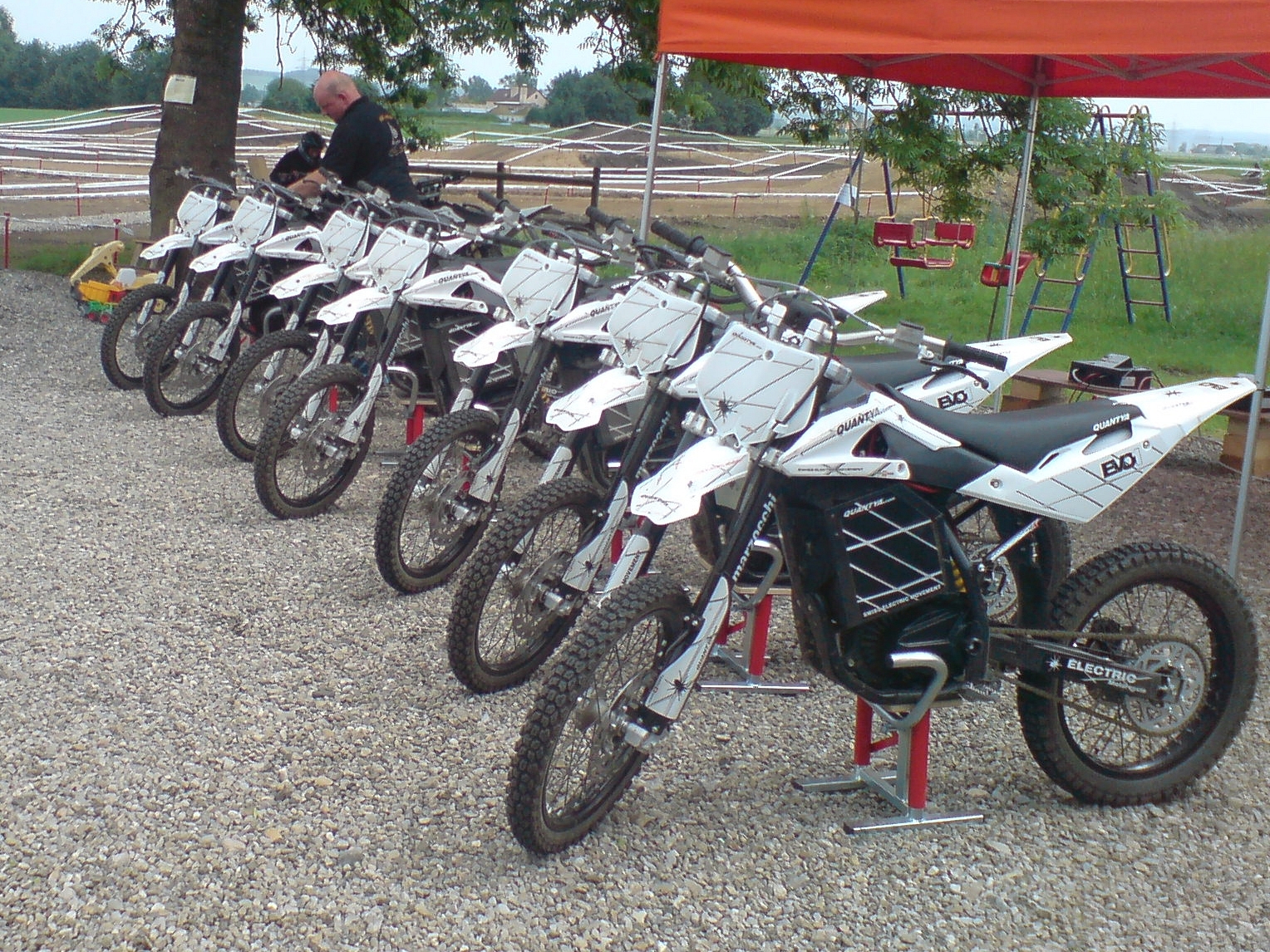Insta
Ernst & Young Report Says Two And Three Wheelers Will Be The First Adopters Of Electric Vehicles

Electric bikes parked in Germany (Clemens Pohl/Wikimedia Commons)
Two and three-wheeler fleets in the country would be the first segments to witness electric vehicle adoption, says an Ersnt & Young (EY) report.
As per a report titled 'Standing up India’s EV ecosystem - who will drive the charge?', intra city buses, corporate cabs and government fleets would be next in line to adopt electric mobility. Fleet owners base their purchase criterion on the total cost of ownership (TCO) and not just the acquisition cost of the vehicle, the report said.
"In terms of vehicle segment and applications, shared vehicles and fleets will offer a better value proposition for all stakeholders manufacturers, as higher volumes can help them achieve scale as well as fleet operators because the TCO of EVs is lower than ICEVs," EY Partner and India Automotive Sector Leader Rakesh Batra said.
The report said that two-wheeler and three-wheeler segments offer a huge opportunity for electrification in India given that it is the world's largest two wheeler market and one of the biggest markets for three wheelers.
"These are widely used by masses for mobility and cargo transportation. While we see an increasing thrust by a number of start-ups and traditional OEMs, governments role would also be critical to drive their mass adoption," it added.
Intra-city buses is another segment which is suitable for electrification as the route predictability is very high, thus enabling the development of charging infrastructure on the route, it noted.
"However, high cost of e-buses due to heavier and pricier batteries remains a challenge," the report said.
Besides, truck segment makes more economic sense to electrify because of the fixed routes and larger distances covered, high battery capacity requirements and uncertainties around decline in residual value with decline in battery costs are impediments to their electrification, EY said.
Highlighting challenges, the report cited low number of community charging stations as one of the biggest impediments. PTI
Support Swarajya's 50 Ground Reports Project & Sponsor A Story
Every general election Swarajya does a 50 ground reports project.
Aimed only at serious readers and those who appreciate the nuances of political undercurrents, the project provides a sense of India's electoral landscape. As you know, these reports are produced after considerable investment of travel, time and effort on the ground.
This time too we've kicked off the project in style and have covered over 30 constituencies already. If you're someone who appreciates such work and have enjoyed our coverage please consider sponsoring a ground report for just Rs 2999 to Rs 19,999 - it goes a long way in helping us produce more quality reportage.
You can also back this project by becoming a subscriber for as little as Rs 999 - so do click on this links and choose a plan that suits you and back us.
Click below to contribute.
Latest